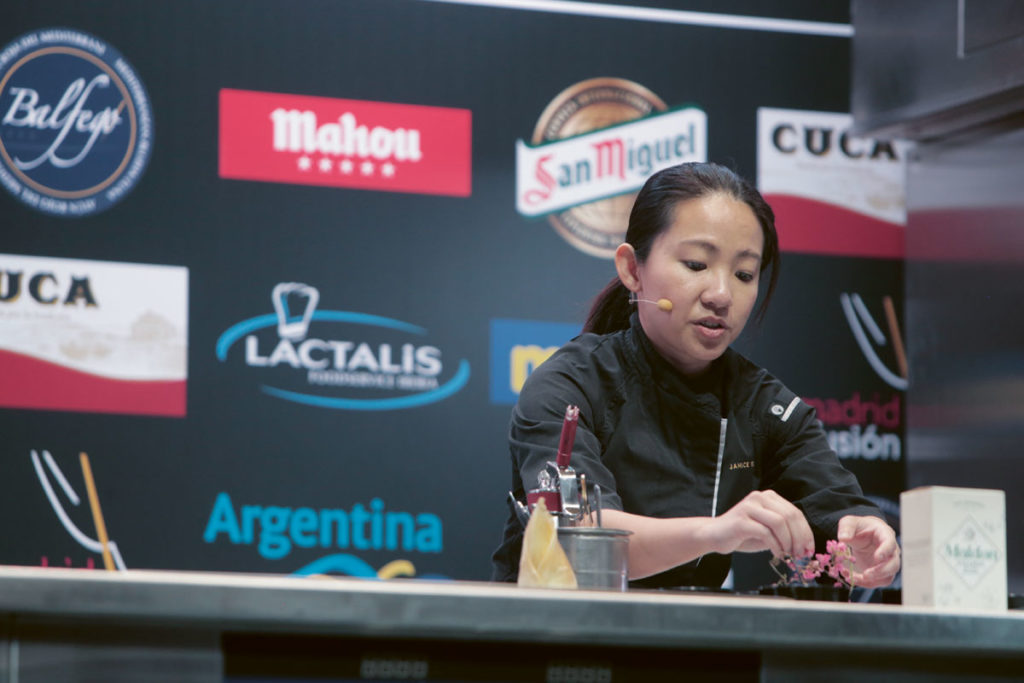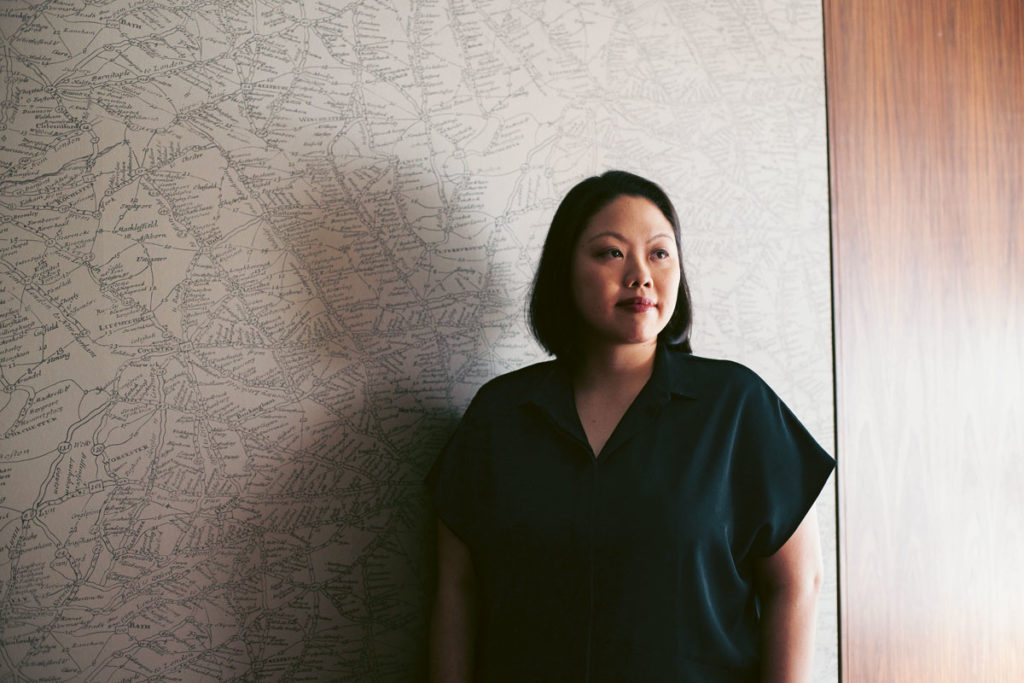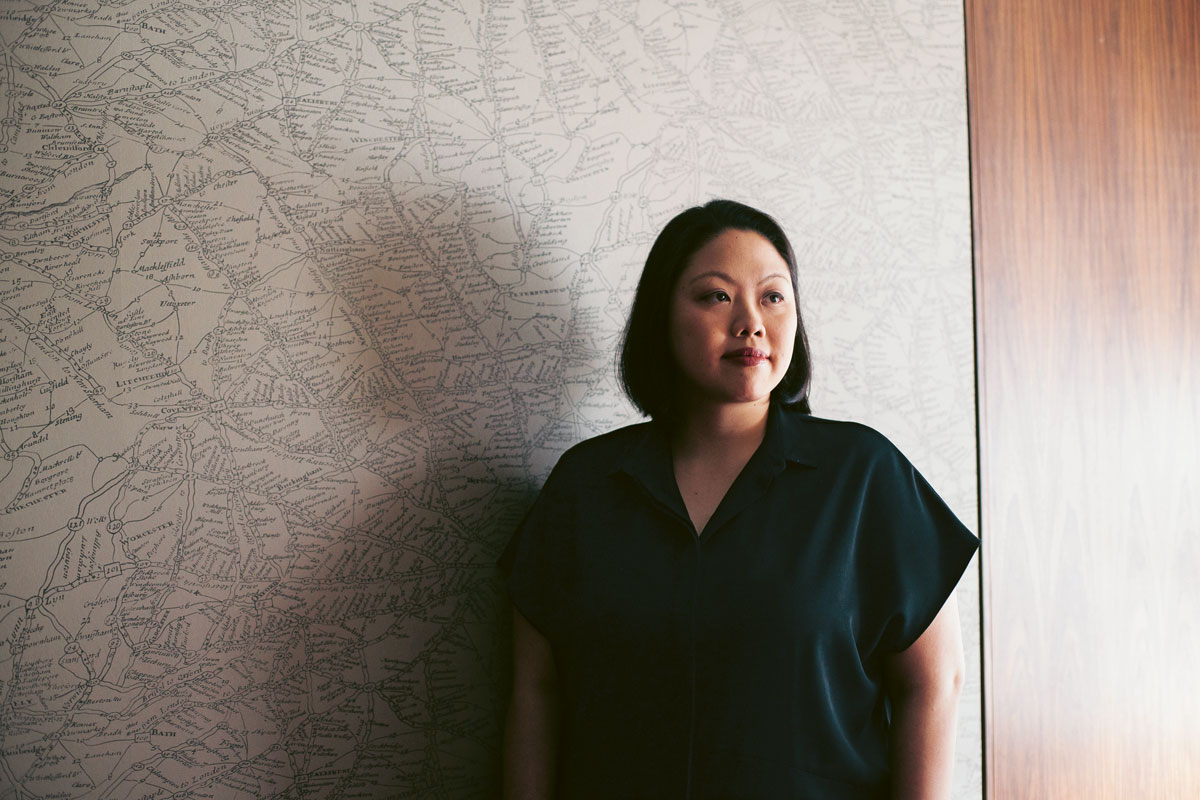They are definitely out there. In 2013, the Bureau of Labor Statistics reported that more than a fifth of the chefs or head cooks in the US are women. At the International Culinary Center (formerly the French Culinary Institute), almost half the 2012 graduates of the culinary program were ladies. And that’s not just as of late. When Tippi Tambunting of M Dining and Bar enrolled at the Culinary Institute of America back in 2000, the ratio of students based on gender was 50-50, she says. “Bordering on 60-40 even.” Given the numbers, where have all the female chefs gone?
World report

“In Singapore, there are more men than women chefs,” says Janice Wong of 2am:dessertbar. But only because it’s a comparatively young country. “Most of the education in Singapore is focused on law, medicine, and economics. The arts, including design and culinary, was not given as much focus 20 years ago. But things are changing. A lot. More women are coming into the industry.”
As an economics graduate, the then 22-year-old Wong chose to pursue further studies at Le Cordon Bleu Paris. Being a lover of all things sweet, it was a natural transition to master patisserie. Her mind was set but not everyone seemed to be convinced. Her parents were initially unsure of her decision but after witnessing how determined their daughter was about her craft and how creating confectioneries fit her like a glove, they realized that desserts were indeed her true calling.
“Most of the education in Singapore is focused on law, medicine, and economics. The arts, including design and culinary, was not given as much focus 20 years ago. But things are changing. A lot. More women are coming into the industry,” says Janice Wong of 2am:dessertbar
It’s the opposite for Elena Arzak, who was named the best female chef in the world in 2016. She was born surrounded by food, and growing up in a busy kitchen environment was a daily scene. “For me, cooking was like walking. I even thought that everybody was a cook.” With renowned master of New Basque cuisine Juan Mari as father, it would be unlikely not to be influenced by food. “Why not be a chef when I already learned a lot of things about cooking as a child? Why not be a chef when it makes me happy? It was natural for me to be one,” she says.

San Sebastian, the Spanish city where the Arzaks are from, has a matriarchal society. “The women are very strong. My grandmother was a restaurant chef. And 80 percent of the chefs in our restaurant are women. I’m always surrounded by them.” Seeing ladies manning the stove isn’t anything unusual for her. “There is no difference between men and women. Before, the women prepared the food at home. Now, both men and women do it,” she says, citing a parallelism between home and professional kitchens. “In the beginning, the women take care of the children, but they are little by little getting out of the house. And so now, the man needs to help, and that’s why a lot of men are learning how to cook very well. Things are changing. It’s only a matter of time.” It’s no different in the Philippines, with women chefs slowly growing in population. But where can one find them?
Body counts

Tambunting wanted to be a chef at 16. She opened a small startup called Saltine, selling pasta sauces, dips, and lemon bars from home and later on, in bazaars. When she visited her sister who was then based in the US, she got to tour the Culinary Institute of America (CIA) campus and fell even more in love with cooking. That consequently clinched her decision to enroll in a professional course at the CIA in 2000. Nine years, an internship under mogul Danny Meyer, and a number of private dining gigs later, she opened Masseto. Currently, she runs and manages the operations at Donosti and M Dining and Bar restaurants.
Since returning to the country and opening her own restaurant, challenges have continually come at a steady pace, like Masseto’s closure last year. Yet nothing seems to faze her. “I enjoy what I am doing and I’m happy with the outcome of what I create. That motivates me more,” she says.
“It gets very tiring. [A chef’s job] is physically intensive. You get cuts, burns, bruises. On top of that, you start and end your day late,” says Tippi Tambunting
However, there are others, who, unlike her, just couldn’t weather the demands of the grueling business. “It gets very tiring. [A chef’s job] is physically intensive. You get cuts, burns, bruises. On top of that, you start and end your day late.” Among them are many of Tambunting’s female classmates in CIA. They ended up shifting gears and working front of the house, she says.
Priorities also change when they start a family. It’s a dilemma many women face, especially those who find themselves in highly charged and fast-paced careers. They have to give up one to accommodate the other, and more often than not, it’s their jobs they sacrifice.
From plates to pacifiers

Take the case of Jennifer Tan, whose course to becoming a promising chef was cut short by an unplanned pregnancy. After interning at Eleven Madison Park and DBGB Kitchen and Bar in New York, she got assigned to move to Singapore and work at the newly opened db Bistro & Oyster Bar by Daniel Boulud. “I already had my visa and everything else was ready but when I found out I was pregnant, I didn’t go anymore. And my pastry chef boss and mentor, who is also female, understood.”
It was a missed opportunity but not something she regretted as motherhood offered another kind of satisfaction. Besides, she hasn’t completely abandoned her love for cooking, just shelved it for some time. “I still love being in the kitchen and that is the reason I set up The Culinary Studio. I still want to teach and share what I know and have learned from my kitchen experiences, so I give one-day cooking and baking classes to cooks, housewives, and enthusiasts.” She also does cakes and a line of desserts for birthdays and weddings.
“I already had my visa and everything else was ready but when I found out I was pregnant, I didn’t go anymore. And my pastry chef boss and mentor, who is also female, understood,” says Jennifer Tan.
As Tan proves, being a chef isn’t the be-all, end-all for a career in the food industry. Women have a wide range of options to choose from. Consultancy, service training, writing—the choices are varied and limitless.
“Some of my women friends who now have families are not in the industry anymore. They decided to just stay home and take care of their families,” says Tambunting. “Then there are others who are back in the field and are now into wines and some, into food styling. They are into different aspects of the industry that allow them to go home early and be with their families.”
So where are the female chefs? Everywhere, apparently. Managing restaurants, teaching in culinary schools, consulting for companies, developing recipes for food brands, tending to their own farms or at home, cooking great meals for their families.
They may not all be at the helm of a restaurant, but they are excelling and making an impact in their own way, on their own terms.
Originally published in F&B Report Vol. 14 No. 2





